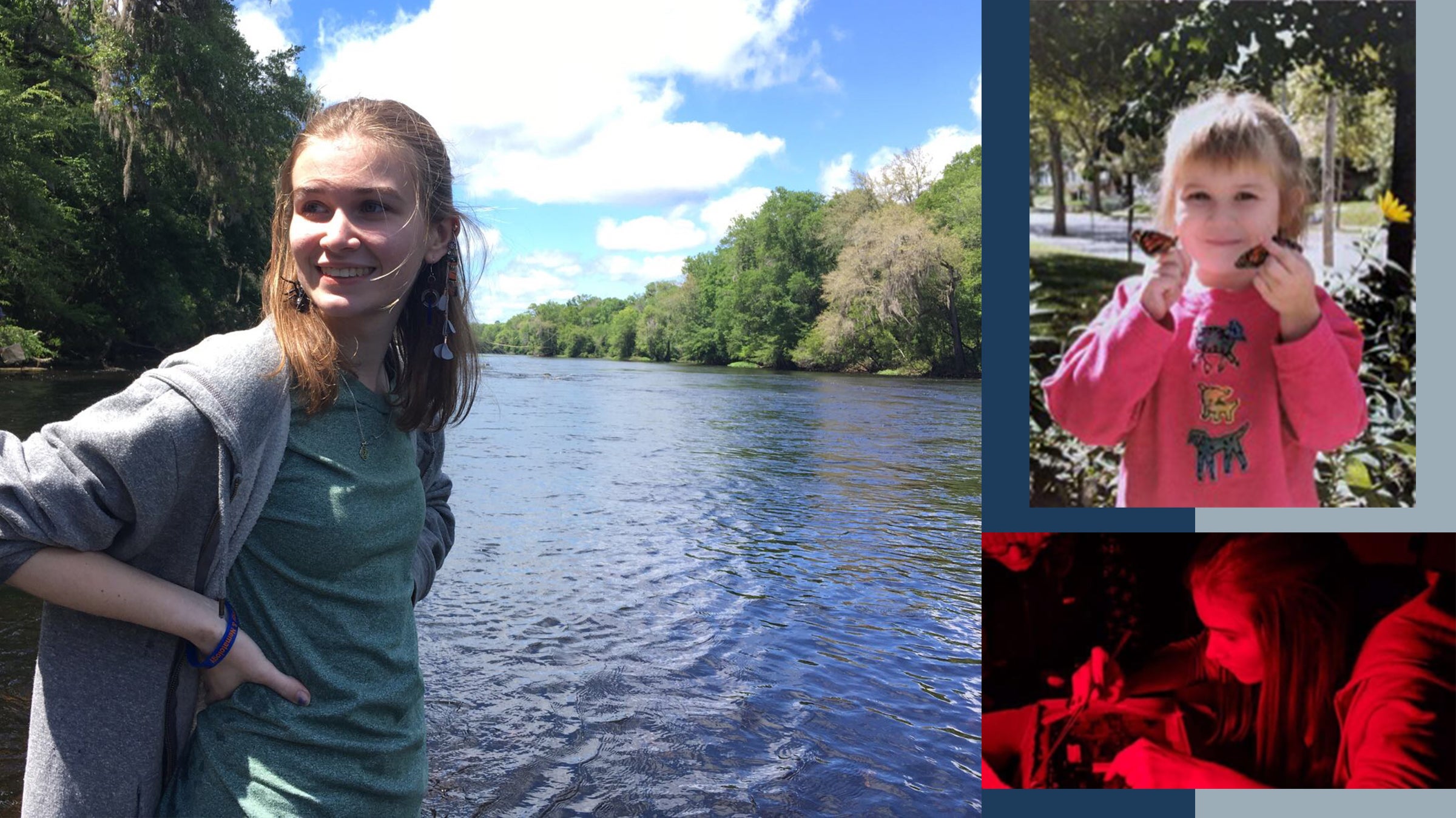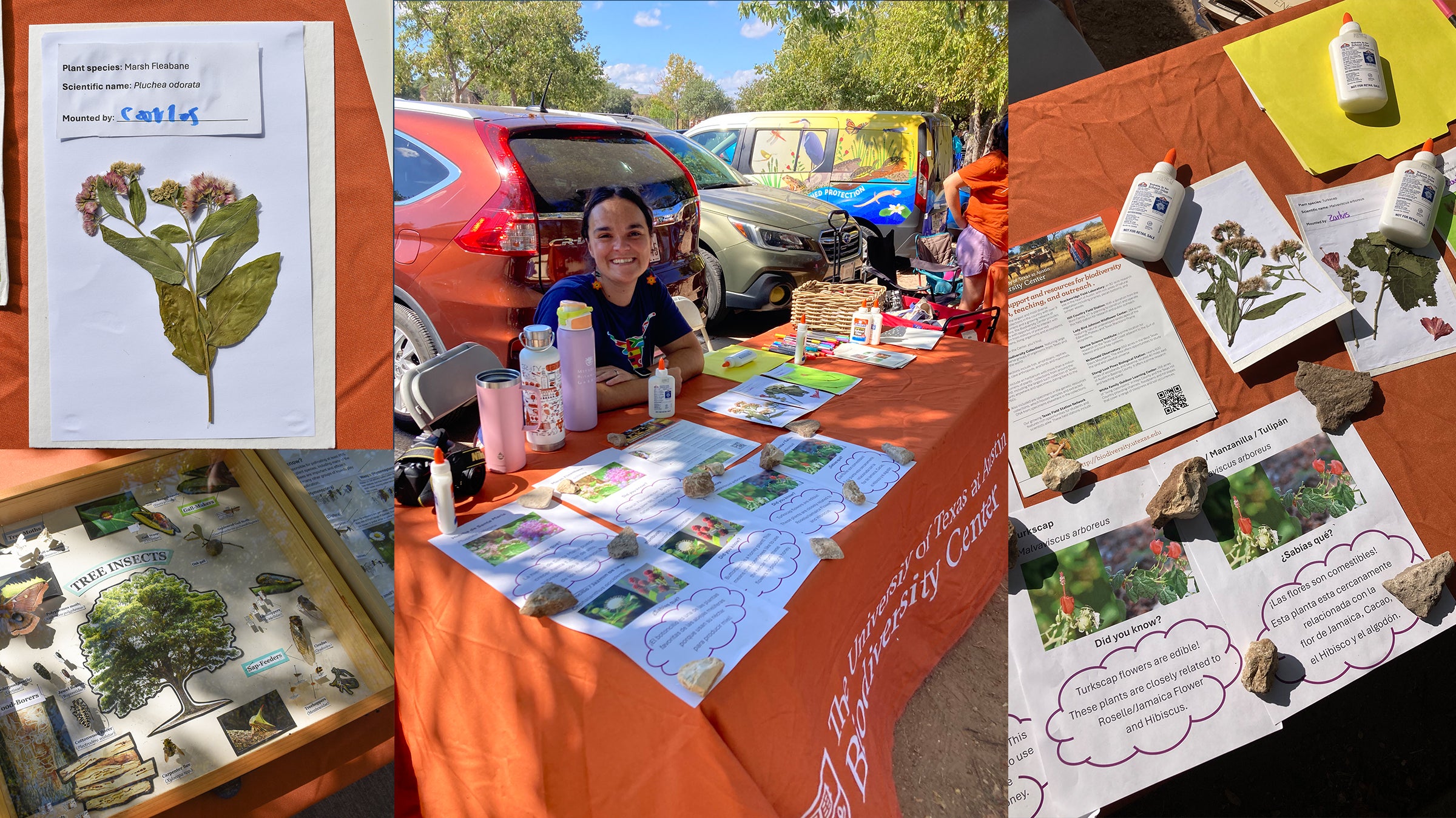
We, in the Ichthyology Collection, often find ourselves wading in deep, murky waters when out collecting around the state in creeks and rivers with steep banks and little chance for a quick escape, if necessary. During these times, we find it best to keep thoughts of ‘what may lurk beneath’ out of our minds and have a general rule that no one is allowed to talk about the river monsters that lurk below while we wade in the water. In celebration of Halloween, we thought we’d share some recent encounters we were able to catch on camera. Enjoy and have a Happy Halloween!

Alligator Snapping Turtle (Macrochelys temminckii):
Imagine our surprise when we seined up this brute just south of Texarkana. We thought it was a rock at first until we heard it exhale. These are sit-and-wait predators that rarely move, wriggling a tongue that looks like a worm to attract fish prey. The brown stuff just in front of its eye is a mass of leeches struggling to get to a soft spot where the blood can be easily accessed.

American Alligator (Alligator mississippiensis):
We found this little guy hanging out in a flooded wheel rut under the I-10 bridge over the Trinity River just east of Houston. It was probably feasting on trapped fish. A few months later crossing this area we found one dead on the road that we estimated to be over 10 feet long.
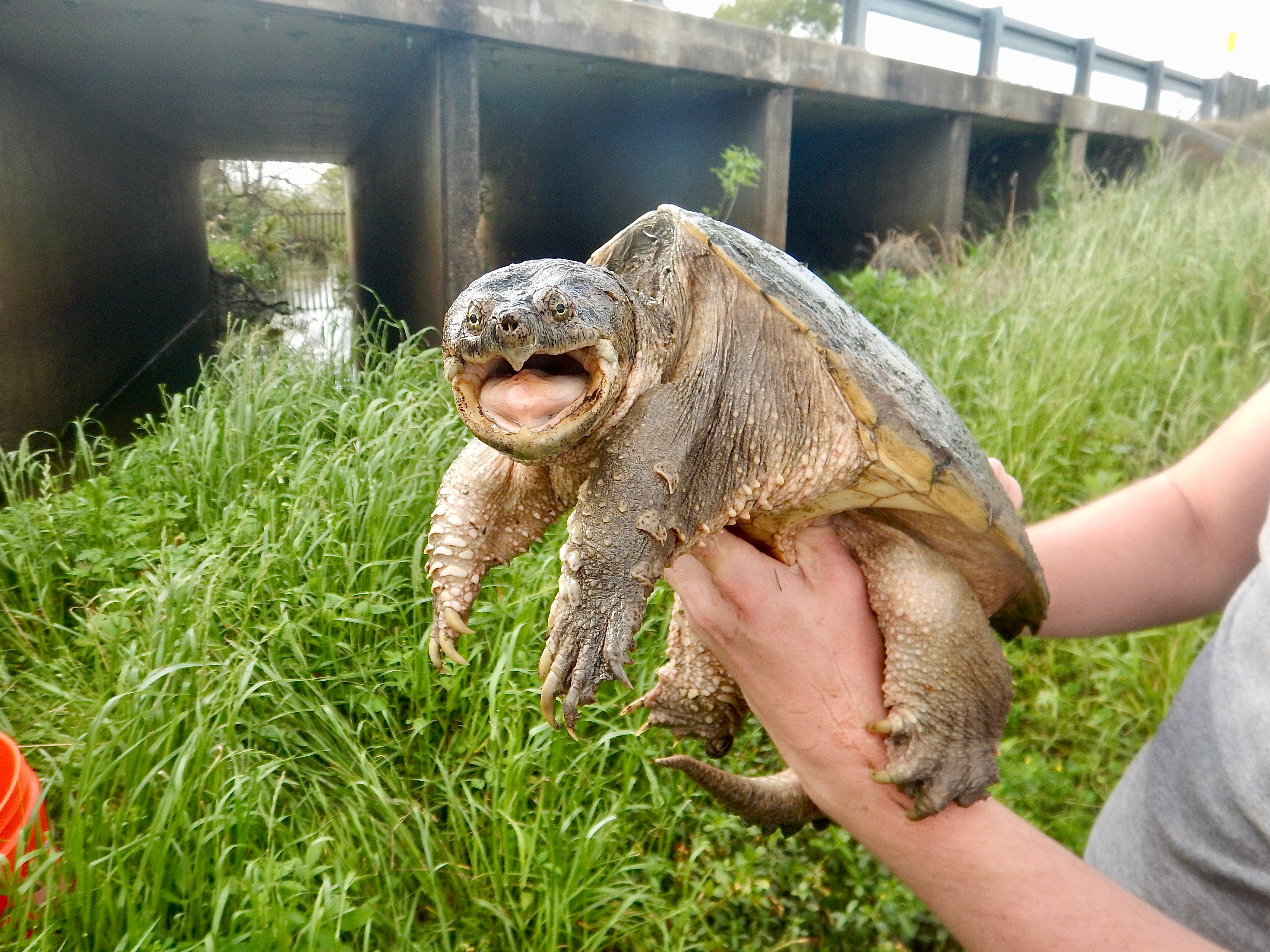
Common Snapping Turtle (Chelydra serpentina):
Much more widespread than their commonly mis-identified for cousin (Alligator Snapping Turtle), common snapping turtles are often encountered - sometimes in pairs. We got these two, that were likely a mating pair, in the same haul.
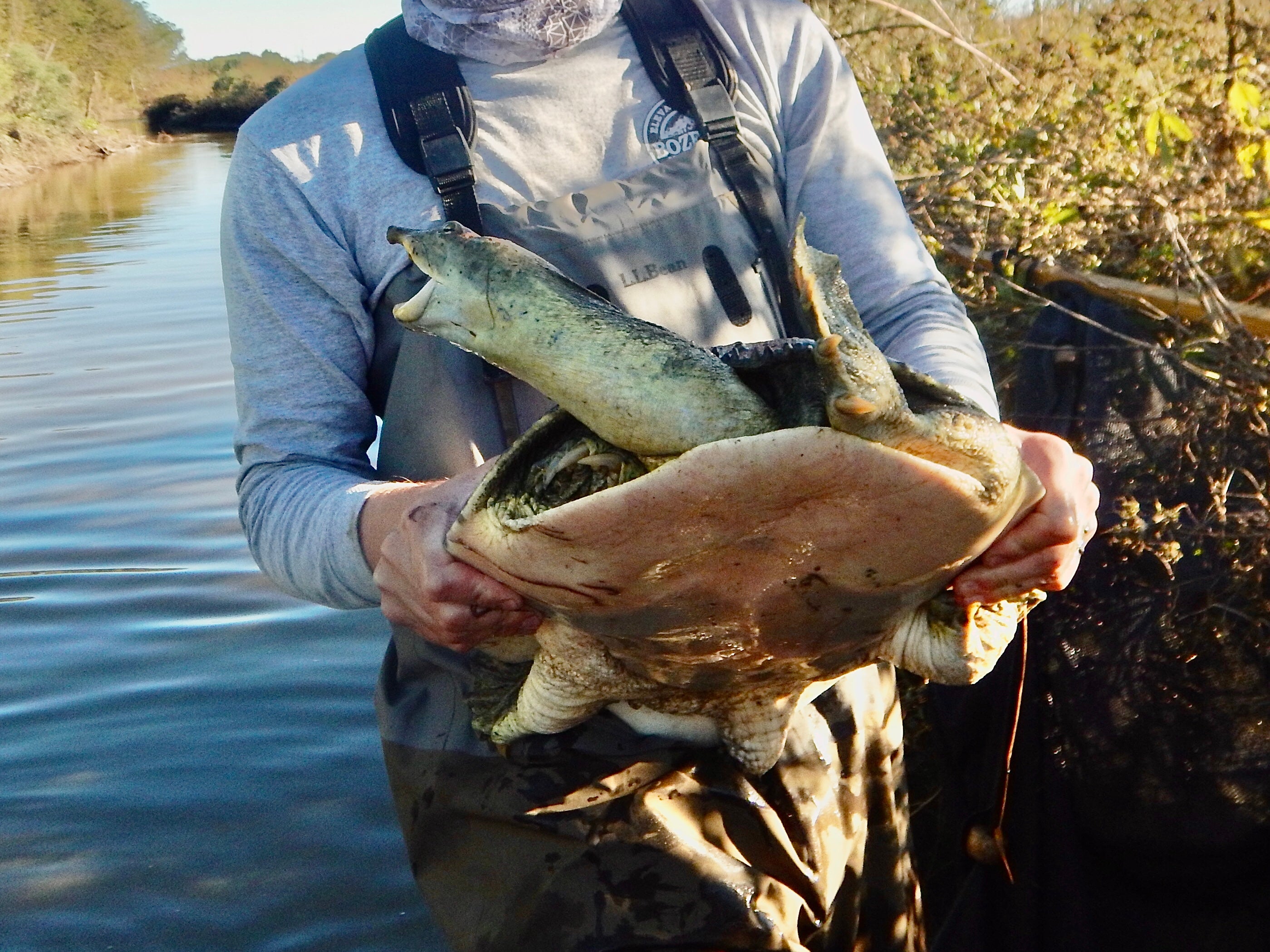
Spiny Softshell Turtle (Apalone spinifera):
We periodically seine up softshell turtles, usually smaller than this one, but occasionally we run across monsters like this. Note the neck length on these guys and why you really have to keep your eyes on them when handling.

Longnose Gar (Lepisosteus osseus):
One of the four gar species in Texas, we often come across large Longnose Gar when collecting below dams. They can get pretty large and have sharp, needle-like teeth.
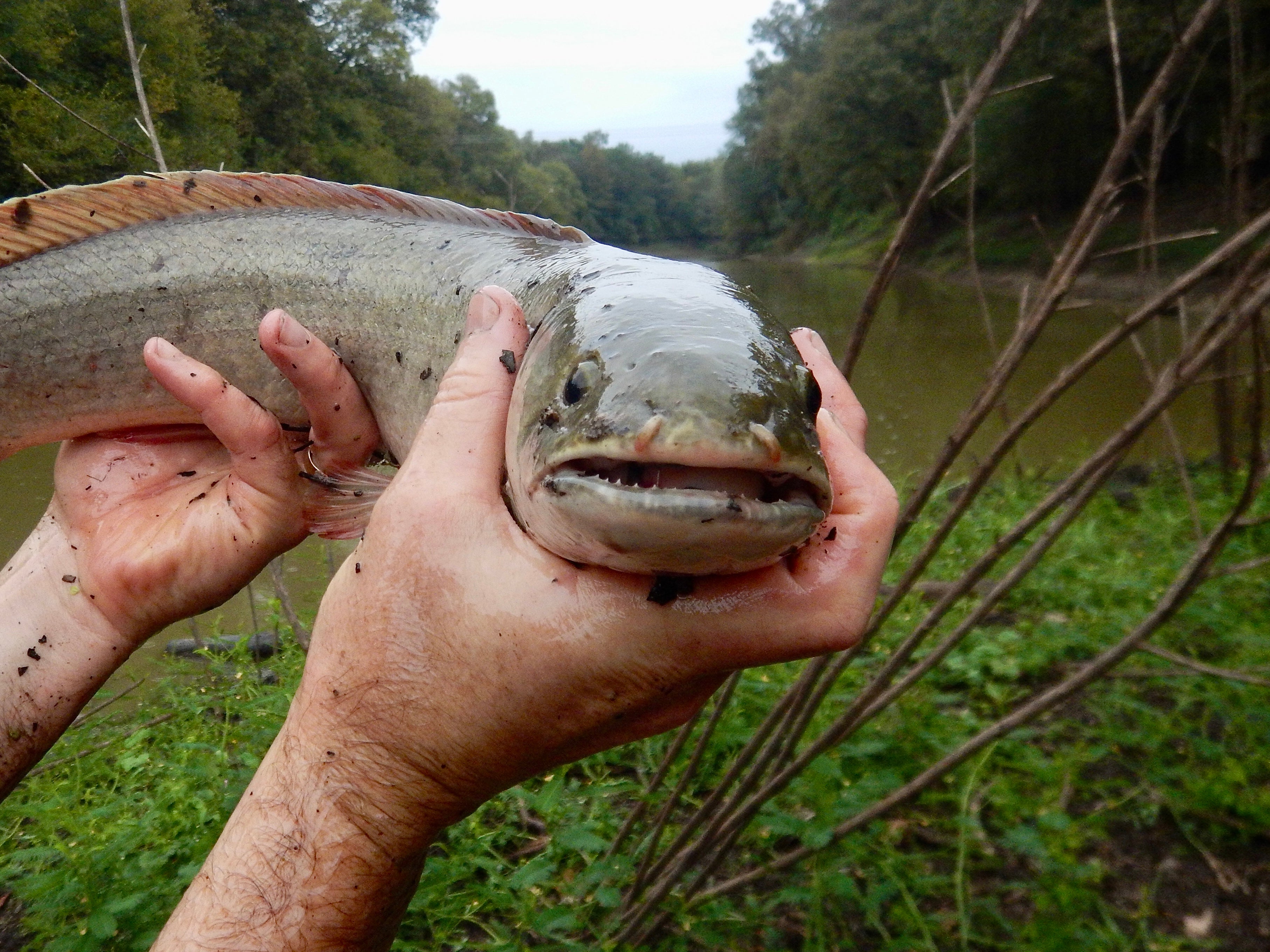
Bowfin (Amia calva):
These primitive fish that like to hang out in the sluggish backwaters, were likely once much further west than they are today. Today they occur in the US east of the Lavaca River in Texas. The males can be beautiful shades of green and blue and don’t get quite as large as these females.

Watersnakes (Nerodia):
We often seine up or come across non-venemous, although likely to bite, water snakes such as this large Diamondback Watersnake (Nerodia rhombifer).
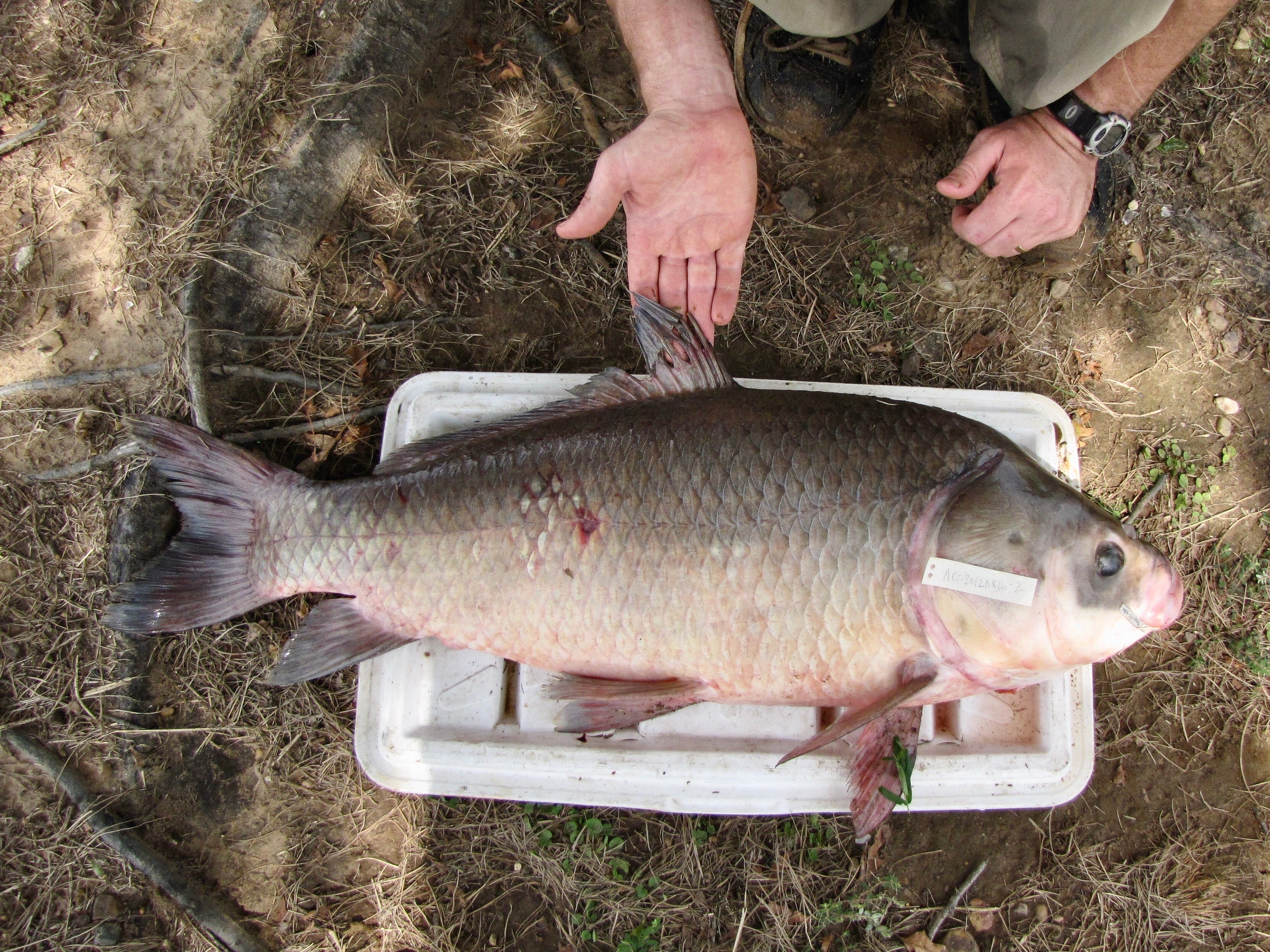
Buffalo (Ictiobus spp):
Buffalo are common throughout the state, but many people are surprised to know that these gentle giants, that feed on invertebrates and detritus, are all around them. The Bigmouth Buffalo (Ictiobus cyprinellus) like the one photographed here from the Sulphur River get to be very old and recently documented to live at least as long as 112 years (https://www.nationalgeographic.com/animals/2019/08/oldest-freshwater-fish-discovered-radiocarbon-dating/).

American Bullfrog (Rana catesbiana):
American bullfrogs are fun to catch when they get this large. They can eat lots more than the small insects most people imagine when they think of frogs and will even cannibalize other bullfrogs. These are easily found at night with headlamps throughout most of the state.

Leeches (family Glossiphoniidae)
Hated by many, Texas’ leeches are not likely to suck the blood of any human. The family of leeches photographed here (Glossiphonidae) are known to take care of their offspring and often leave their host when they have babies to care for. If you find one free-living (not on a turtle or other animal) it is likely with babies.

